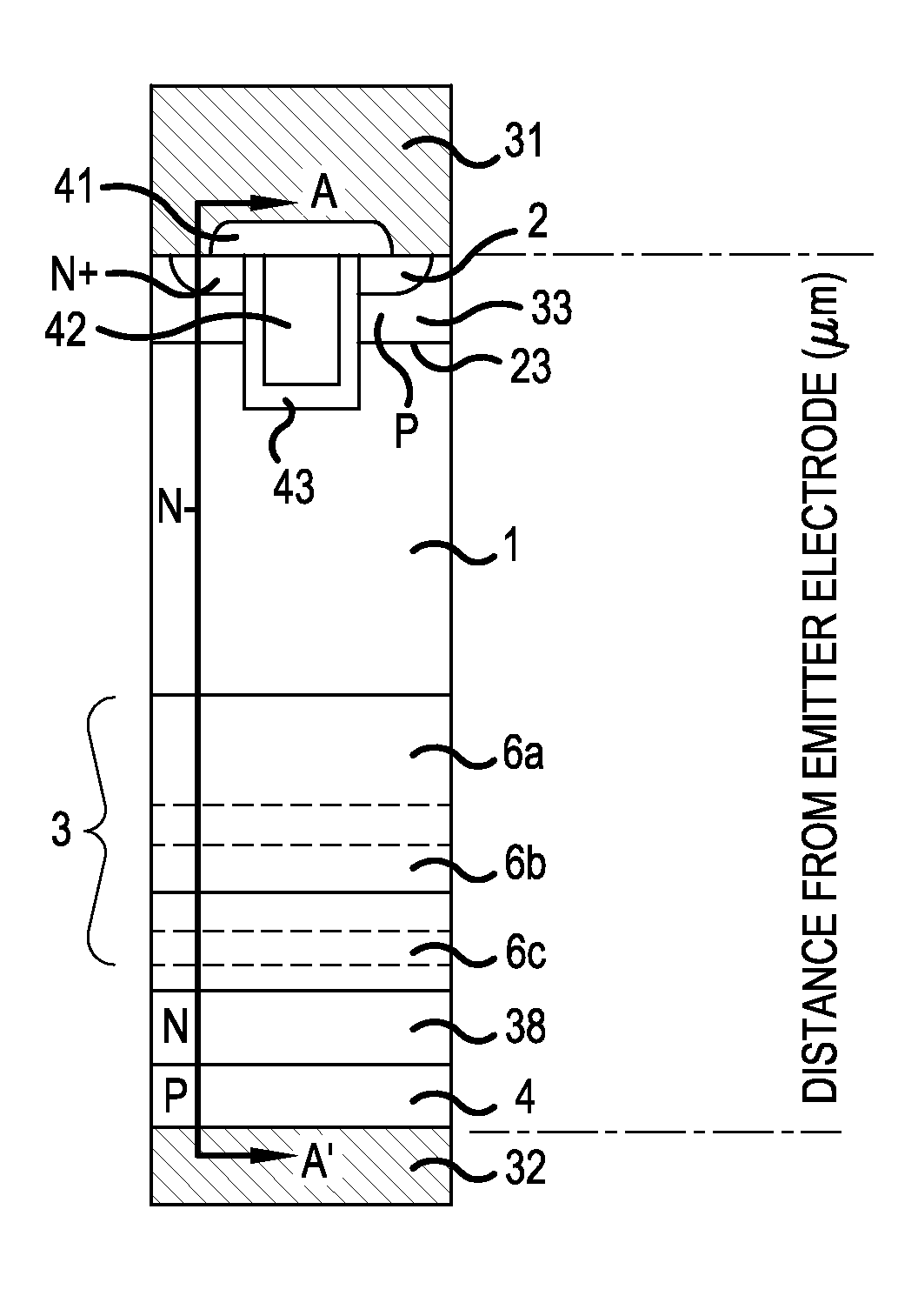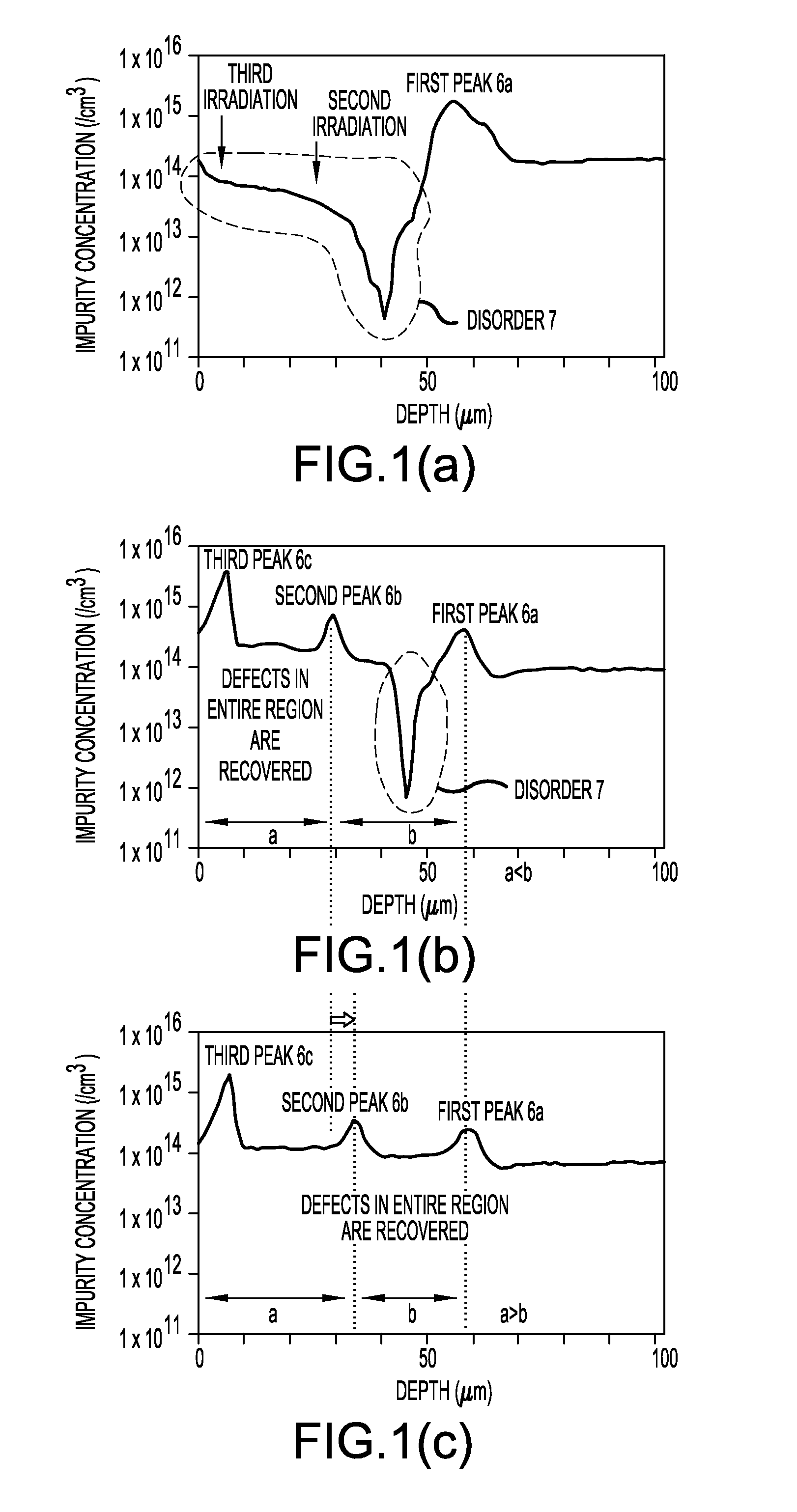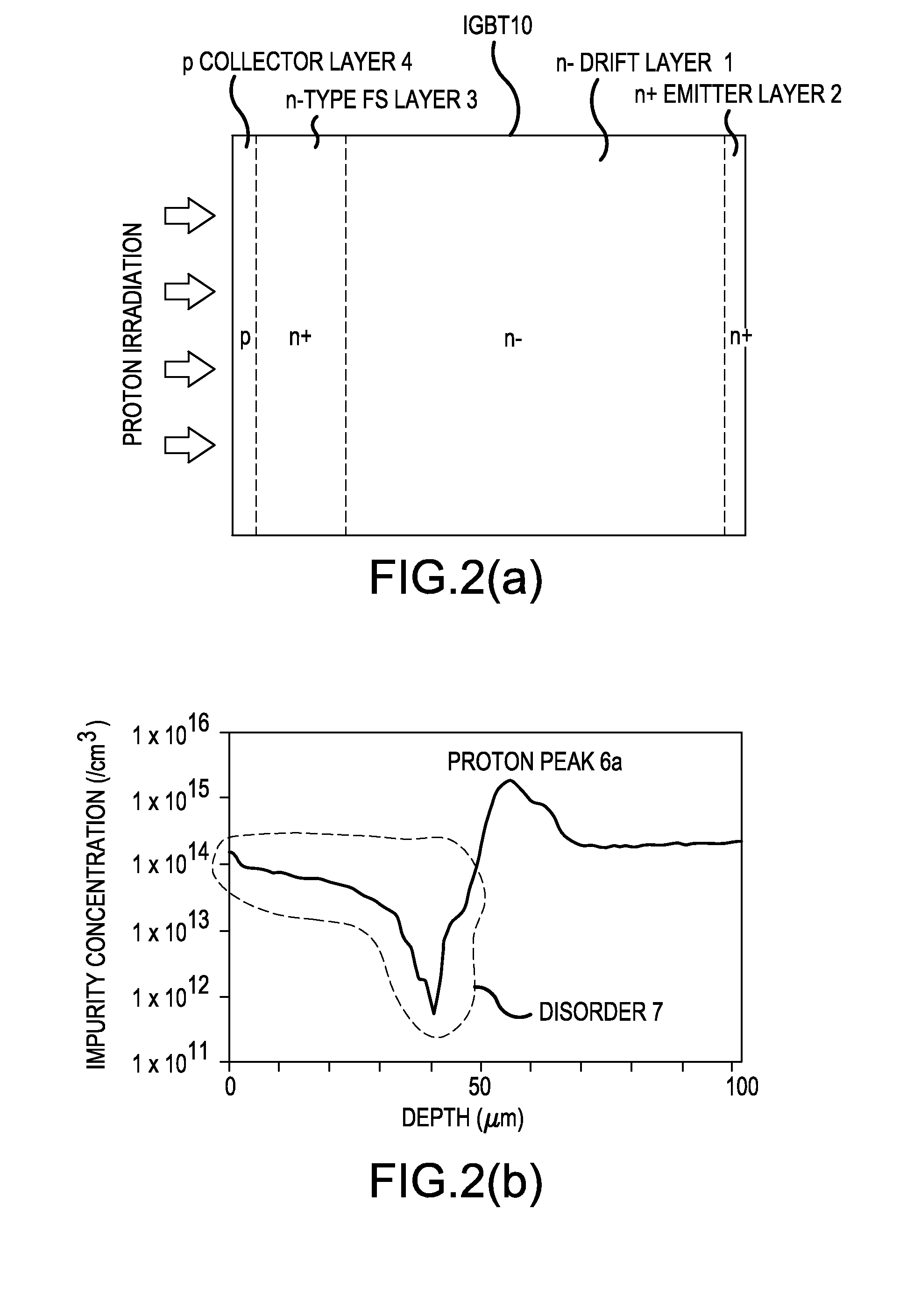Semiconductor device and method for producing semiconductor device
a semiconductor and semiconductor technology, applied in the direction of semiconductor devices, electrical devices, transistors, etc., can solve the problems of high leakage current, turn-off oscillation, and high leakage current, so as to reduce the degree of disorder, prevent deterioration of characteristics, and increase leakage current
- Summary
- Abstract
- Description
- Claims
- Application Information
AI Technical Summary
Benefits of technology
Problems solved by technology
Method used
Image
Examples
embodiment 1
[0047]FIG. 2 is a cross-sectional view schematically illustrating the structure of a general IGBT. FIG. 2(a) is a schematic cross-sectional view illustrating the IGBT including an n-type field stop (FS) layer 3 which is formed by a general proton irradiation method according to the related art. FIG. 2(b) shows the impurity concentration profile of the n-type FS layer 3 which is measured by a known spreading resistance (SR) measurement method. However, in the schematic cross-sectional view of the IGBT, which is an example of the semiconductor device according to the invention, the semiconductor device according to the invention has the same layer structure as that shown in FIG. 2(a). Therefore, the cross-sectional view shown in FIG. 2(a) is used in the description of the semiconductor device according to the invention. An IGBT produced by a semiconductor device production method according to the invention differs from the IGBT produced by the method according to the related method in...
embodiment 2
[0072]FIG. 5 is a characteristic diagram illustrating the impurity concentration profile of an n-type FS layer in a semiconductor device according to Embodiment 2. A semiconductor device production method according to Embodiment 2 differs from the semiconductor device production method according to Embodiment 1 in that a plurality of proton irradiation operations for removing disorder 17 or reducing the degree of the disorder 17 are sequentially performed from a deep position to a shallow position from the rear surface of a substrate in the region of the disorder 17.
[0073]The semiconductor device produced by the semiconductor device production method according to Embodiment 2 is, for example, an IGBT shown in FIG. 2(a), similarly to Embodiment 1. The semiconductor device production method according to Embodiment 2 is the same as the semiconductor device production method according to Embodiment 1 except for a proton irradiation method for forming an n-type FS layer 3. Therefore, onl...
embodiment 3
[0081]FIG. 6 is a characteristic diagram illustrating the impurity concentration profile of an n-type FS layer in a semiconductor device according to Embodiment 3. A semiconductor device production method according to Embodiment 3 differs from the semiconductor device production method according to Embodiment 1 in that a plurality of proton irradiation operations for removing disorder 27 or reducing the degree of the disorder 27 are sequentially performed from a shallow position to a deep position from the rear surface of a substrate in the region of the disorder 27.
[0082]A proton irradiation method according to Embodiment 3 will be described. FIGS. 6(a) to 6(c) show the impurity concentration profile of an n-type FS layer 3 after the first to third proton irradiation operations and annealing processes. As shown in FIG. 6(a), a first proton peak 26a is formed at a predetermined depth from the rear surface of the substrate by the first proton irradiation to form the region (a portion...
PUM
 Login to View More
Login to View More Abstract
Description
Claims
Application Information
 Login to View More
Login to View More - R&D
- Intellectual Property
- Life Sciences
- Materials
- Tech Scout
- Unparalleled Data Quality
- Higher Quality Content
- 60% Fewer Hallucinations
Browse by: Latest US Patents, China's latest patents, Technical Efficacy Thesaurus, Application Domain, Technology Topic, Popular Technical Reports.
© 2025 PatSnap. All rights reserved.Legal|Privacy policy|Modern Slavery Act Transparency Statement|Sitemap|About US| Contact US: help@patsnap.com



